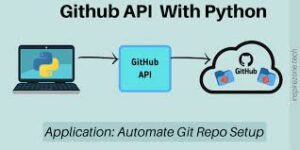
Integration Tips | API with GitHub
Introduction
Integration is where GitHub’s API truly shines. By connecting repositories with other platforms, developers streamline their workflows and eliminate repetitive tasks. The Integration Tips page at API with GitHub offers practical advice on how to build seamless connections that make daily development smoother.
Why Integration Matters
Modern development rarely happens in isolation. Teams use tools like Slack, Trello, Jira, and CI/CD platforms alongside GitHub. Integrating these systems through the API reduces friction and creates a unified environment where code, communication, and management coexist.
Common Integration Scenarios
The tips section explores real-world use cases, such as:
-
Slack notifications when pull requests are opened or merged.
-
Trello card updates linked to GitHub issues.
-
Deployment pipelines triggered by GitHub commits.
Each scenario is explained with practical steps and suggestions, showing how even small integrations can deliver big results.
Best Practices for Integration
To avoid pitfalls, developers are encouraged to follow certain guidelines:
-
Always secure authentication tokens.
-
Use webhooks for real-time updates instead of heavy polling.
-
Keep integrations lightweight to prevent unnecessary overhead.
These tips ensure that integrations remain reliable and scalable.
Advanced Connections
Beyond basic integrations, the page also explores advanced strategies like connecting GitHub with analytics tools for productivity tracking, or syncing repositories with cloud services for backups. These approaches highlight the flexibility of the API and encourage developers to think creatively.
Conclusion
The Integration Tips section at API with GitHub is about making development easier and smarter. By following these strategies, developers turn isolated tools into a cohesive ecosystem where collaboration thrives.
